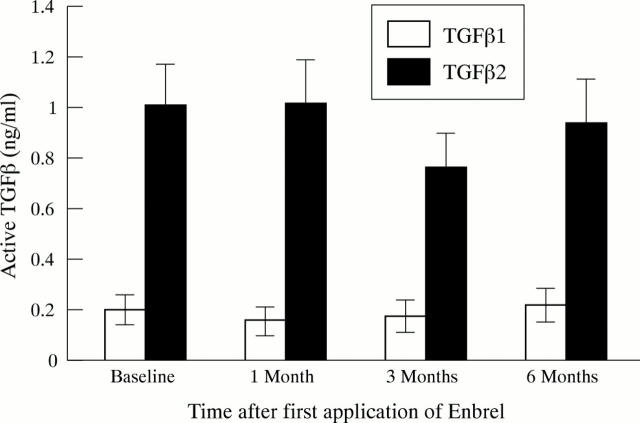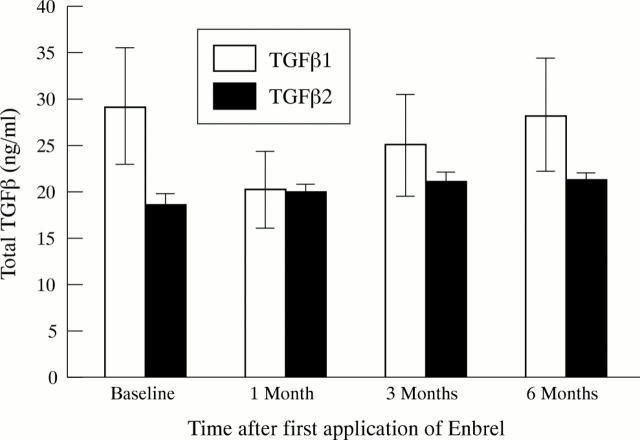Abstract
Methods: Plasma levels of TGFß1 and TGFß2 were determined in 26 patients with RA during six months of etanercept treatment and compared with disease activity and laboratory parameters, including matrix metalloproteinase-3 (MMP-3) and interleukin 6 (IL6).
Results: Before treatment all patients had raised TGFß1, IL6, and MMP-3 levels. In the course of treatment IL6 and MMP-3 levels decreased significantly, accompanied by a drop in serological markers (C reactive protein and erythrocyte sedimentation rate) and clinical disease activity (visual analogue scale and Thompson joint score). By contrast, high levels of latent TGFß1 were present in all specimens over the entire six months. TGFß2 levels did not change during treatment.
Conclusions: Etanercept treatment induces subtle changes in the cytokine network. Although the proinflammatory cytokine IL6 is down regulated, the persistence of high TGFß plasma levels indicates the existence of as yet unknown mechanisms for TGFß overexpression in RA. This may predispose to severe infections and can cause an altered tumour defence.
Full Text
The Full Text of this article is available as a PDF (79.8 KB).
Figure 1 .
Course of plasma levels of spontaneously active TGFß in the etanercept treated patients as determined by isoform-specific ELISAs. Bars represent the mean values (SEM).
Figure 2 .
Course of plasma levels of total TGFß in the etanercept treated patients as determined by isoform-specific ELISAs after acid activation of latent TGFß. Bars represent the mean values (SEM).




